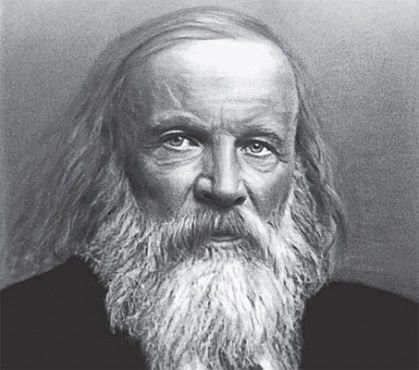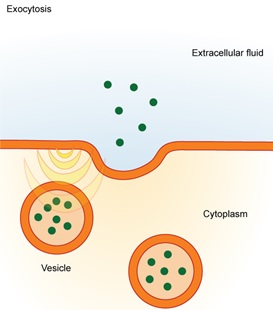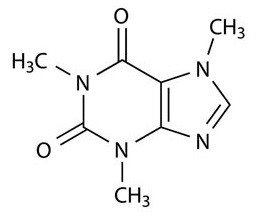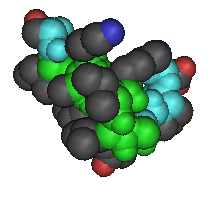|
|
|
Bio-Synthesis Newsletter - February 2019
|
2019 – The year of the Periodic Table of Chemical Elements.
 The year 1869 is considered as the year of the discovery of the Periodic Table of Chemical Elements. Therefore 2019 will be the 150th anniversary of the Periodic Table of Chemical Elements. The United Nations General Assembly and UNESCO proclaimed 2019 the "International Year of the Periodic Table of Chemical Elements (IYPT2019) [https://www.iypt2019.org/]. In 1869 the Russian chemist Dimitri Mendeleev started the development of the periodic table by arranging chemical elements according to their atomic mass. Mendeleev’s arrangement corresponded to the relative molar mass of the elements. Mendeleev’s table was first published in a Russian journal but the German journal, “ZeitschriftfuerChemie" republished it a little later.This first table of the elements allowed Mendeleev to predict the discovery of new elements since the table left spaces for them. The year 1869 is considered as the year of the discovery of the Periodic Table of Chemical Elements. Therefore 2019 will be the 150th anniversary of the Periodic Table of Chemical Elements. The United Nations General Assembly and UNESCO proclaimed 2019 the "International Year of the Periodic Table of Chemical Elements (IYPT2019) [https://www.iypt2019.org/]. In 1869 the Russian chemist Dimitri Mendeleev started the development of the periodic table by arranging chemical elements according to their atomic mass. Mendeleev’s arrangement corresponded to the relative molar mass of the elements. Mendeleev’s table was first published in a Russian journal but the German journal, “ZeitschriftfuerChemie" republished it a little later.This first table of the elements allowed Mendeleev to predict the discovery of new elements since the table left spaces for them.
|
|
Read More
|
|
|
ExtracellularVesicles in NeuralMaintenance and Repair.
 Extracellular vesicles (EVs) https://www.ncbi.nlm.nih.gov/pubmed/29384376 have emerged as key players in intercellular communication underlying many physiological processes such as synaptic plasticity and the maintenance of myelination and important biomarkers for disease diagnoses and prognosis. EVs shuttle molecules between neurons and glia cells influencing the function of synaptic activity, morphological plasticity, and neurovascular integrity. EVs are cargo carrying nanostructures surrounded by membranes released from cells. Typical cargo molecules moved are DNA, RNA, and proteins. Different types of EVs exist. These include microvesicles (MVs), exosomes, oncosomes, and apoptotic bodies, and maybe others. EVs appear to play neuroprotective roles in the nervous system and also improve neuronal regeneration. Even though the capture and analysis of EVs are complex, EVs can be biotinylated https://www.ncbi.nlm.nih.gov/pmc/articles/PMC6029891/ to allow for easier downstream analysis. Extracellular vesicles (EVs) https://www.ncbi.nlm.nih.gov/pubmed/29384376 have emerged as key players in intercellular communication underlying many physiological processes such as synaptic plasticity and the maintenance of myelination and important biomarkers for disease diagnoses and prognosis. EVs shuttle molecules between neurons and glia cells influencing the function of synaptic activity, morphological plasticity, and neurovascular integrity. EVs are cargo carrying nanostructures surrounded by membranes released from cells. Typical cargo molecules moved are DNA, RNA, and proteins. Different types of EVs exist. These include microvesicles (MVs), exosomes, oncosomes, and apoptotic bodies, and maybe others. EVs appear to play neuroprotective roles in the nervous system and also improve neuronal regeneration. Even though the capture and analysis of EVs are complex, EVs can be biotinylated https://www.ncbi.nlm.nih.gov/pmc/articles/PMC6029891/ to allow for easier downstream analysis.
|
|
Read More
|
|
|
200 years of caffeine
 In 1819 the German scientist Friedlieb Ferdinand Runge discovered caffeine when he isolated and purified caffeine as a white crystalline substance.Caffeine is widely perceived as a central nervous system (CNS) stimulant https://www.ncbi.nlm.nih.gov/pmc/articles/PMC1484231/, and it is associated with many myths but it is now use worldwide. Caffeine binds to damaged DNA andat a concentration of 1.6 mM does not introduce strand breaks into preformed DNA and also does not inhibit the rejoining of γ-ray-induced strand breaks.Caffeine acts as an antagonist at all four adenosine receptor subtypes with varying potenciesreadily crosses the blood–brain barrier. Caffeine https://www.pnas.org/content/87/9/3522, mimics the effect of adenine and 2’-he dA, both of which inhibit ATR, resulting in premature chromatin condensation (PCC). In 1819 the German scientist Friedlieb Ferdinand Runge discovered caffeine when he isolated and purified caffeine as a white crystalline substance.Caffeine is widely perceived as a central nervous system (CNS) stimulant https://www.ncbi.nlm.nih.gov/pmc/articles/PMC1484231/, and it is associated with many myths but it is now use worldwide. Caffeine binds to damaged DNA andat a concentration of 1.6 mM does not introduce strand breaks into preformed DNA and also does not inhibit the rejoining of γ-ray-induced strand breaks.Caffeine acts as an antagonist at all four adenosine receptor subtypes with varying potenciesreadily crosses the blood–brain barrier. Caffeine https://www.pnas.org/content/87/9/3522, mimics the effect of adenine and 2’-he dA, both of which inhibit ATR, resulting in premature chromatin condensation (PCC).
|
|
Read More
|
|
|
mSIRK stimulates G-protein pathways
 The cell-permeable https://www.biosyn.com/tew/cell-penetrating-or-trojan-peptides-cpps.aspx#! N-myristoylated https://www.biosyn.com/TEW/Myristoylated-Peptides.aspx#! G-protein binding peptide mSIRK stimulates G-protein pathways in cells.The infusion of a trans-acting activator of transcription (TAT)-fused peptide that targets the Gβγ-binding site on thedopamine transporter into the nucleus accumbens affects amphetamine-induced but not cocaine-induced hyperlocomotion. Peptides that bind to G protein βγ subunits selectively block interactions between βγ subunits and a subset of effectors in vitro.Therefore the pharmacological targeting of distinct regions within this protein interface may allow selective manipulation of Gβγ-dependent signaling pathways. The cell-permeable https://www.biosyn.com/tew/cell-penetrating-or-trojan-peptides-cpps.aspx#! N-myristoylated https://www.biosyn.com/TEW/Myristoylated-Peptides.aspx#! G-protein binding peptide mSIRK stimulates G-protein pathways in cells.The infusion of a trans-acting activator of transcription (TAT)-fused peptide that targets the Gβγ-binding site on thedopamine transporter into the nucleus accumbens affects amphetamine-induced but not cocaine-induced hyperlocomotion. Peptides that bind to G protein βγ subunits selectively block interactions between βγ subunits and a subset of effectors in vitro.Therefore the pharmacological targeting of distinct regions within this protein interface may allow selective manipulation of Gβγ-dependent signaling pathways.
|
|
Read More
|
|
|
|
|
Bio-Synthesis, Inc.
800 Mario Court, Lewisville, TX 75057, USA
Toll Free: 800.227.0627 | 1.972.420.8505 (Intl.)
|
|
|
|
|
|